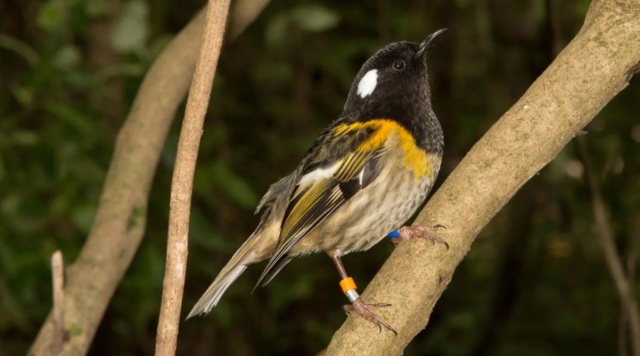In the past 30 years, a wilderness has grown up in the heart of New Zealand's capital – so successfully its neighbours now complain about the raucous racket of rare birds. But this is just the first step in a much longer plan for wilderness in the city.
As I walk along a winding trail through Zealandia, an ecosanctuary in New Zealand's capital city of Wellington, I smell the wet earth from last night's rain, hear birds cackle and sing, and feel a slight chill from the cool breeze. Then, I see it: a streak of yellow landing on a tree branch high above. It's a stitchbird – a sparrow-sized songbird whose M?ori name, hihi, refers to the rays of the sun.
One of New Zealand's rarest birds, the hihi is a success story for Zealandia, which houses the largest mainland population of around 100 adults. Hihi are considered a threatened species, disappearing from the mainland in the 1880s and confining themselves to Little Barrier Island off the north-eastern coast of New Zealand's North Island. In 2005, they were translocated to Zealandia, where they have been breeding successfully each year.
Evidence of the benefits of green spaces in cities abound – from improving physical and mental health and well-being to absorbing carbon, mitigating floods and reducing the heat island effect. Urban green spaces become even more vital as two-thirds of the world's population will likely be living in cities by 2050, while 87% of New Zealand's population already lives in urban areas.
"As we become more urbanised, we need to connect people to nature," says Margaret Stanley, an ecologist and associate professor in the School of Biological Sciences at the University of Auckland. "The more they connect with nature, the more they value it."
Zealandia's rich biodiversity can be attributed to the 5.3-mile (8.6km) predator-exclusion fence encircling 225 hectares (556 acres) of land. A group of conservation managers, engineers and scientists designed and tested a fence suitable to Zealandia's needs – one high enough to prevent invasive mammalian predators such as ferrets and possums from jumping or climbing over, with a wire mesh wall to exclude pests down to the size of a mouse and an underground skirt to prevent rats and other animals from burrowing underneath. After the fence's construction in 1999, pest eradication followed, with Zealandia declared predator-free a year later. Since then, a number of flora and fauna have been reintroduced or naturally grown in the ecosanctuary.
Aside from housing over 40 native bird species, Zealandia is also home to dozens of critically endangered reptiles, frogs and invertebrates, as well as hundreds of native plants and trees. Yet unlike many ecosanctuaries located on an offshore island, in a forest or in a rural environment, Zealandia is situated in a valley in Karori, a suburb only 10 minutes' drive from New Zealand's parliament.


